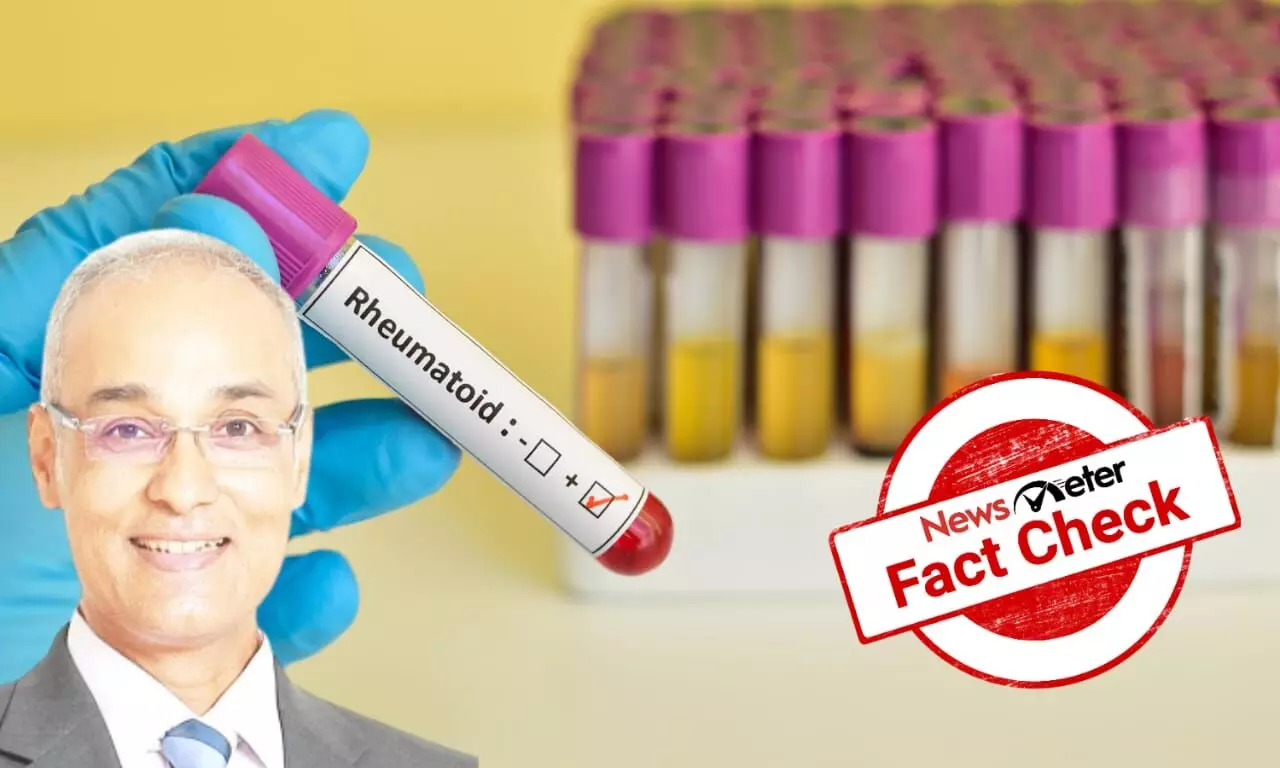Busting 7 myths about Rheumatoid Arthritis
Debunking myths around Rheumatoid Arthritis with Dr. Udai Prakash, Orthopaedic consultant (hip and knee specialist).
By Sunanda Naik
Hyderabad: Rheumatoid arthritis, or RA, is an autoimmune and inflammatory disease which means that your immune system attacks healthy cells in your body by mistake, causing inflammation (painful swelling) in the affected parts of the body, according to the Center for Disease Control and Prevention.
It further adds, “RA mainly attacks the joints, usually many joints at once. RA commonly affects joints in the hands, wrists, and knees. In a joint with RA, the lining of the joint becomes inflamed, causing damage to joint tissue. This tissue damage can cause long-lasting or chronic pain, unsteadiness (lack of balance), and deformity (misshapenness).”
Moreover, “RA can also affect other tissues throughout the body and cause problems in organs such as the lungs, heart, and eyes.”
Although rheumatoid arthritis has a frequency of 0.75% in India, which translates to around seven million individuals in India, there’s still a lot of misinformation about RA.
NewsMeter contacted Dr. Udai Prakash, orthopaedic consultant (hip and knee specialist), to clear some misconceptions about the disease.
Myth: RA is just a part of aging.
No. It’s a condition where most of the body joints become swollen and painful. It’s an immune condition where the body’s defense mechanism attacks its own tissue. It does NOT correlate with aging but is caused by a combination of genetics, hormones, and environmental factors. It is an auto-immune inflammatory condition that attacks the joint cartilage/lining
Myth: RA only affects the joints.
Joint cartilage is primarily the main area affected leading to pain and stiffness but in advanced situations, it can affect skin eyes, heart, blood vessels and lungs too.
Myth: Exercise is bad for RA.
NOT exercising and NOT maintaining a balance weight can further lead to joint stiffness and reduced muscle strength. This leads to a further increase in pain and fatigue. Exercise helps in improving overall functional capacity. Training is never bad for the body if done appropriately and when RA is under good control.
Myth: There’s nothing you can do about your RA.
You can control the intensity of your symptoms and their impact on daily life with proper medications and a guided exercise programme.
Myth: RA is the same as osteoarthritis.
Both these conditions cause joint pain and stiffness. OA is regular wear and tear of joints while RA is due to the immune system attacking your joint cartilage. A blood test like ESR, CRP, RA factor, and Anti CCP helps in distinguishing the two conditions.
Myth: There isn’t any treatment for RA, so you just have to live with it.
Since it is auto-immune in nature, it cannot be reversed but under the treatment of a rheumatologist, it can be controlled to a great extent with medications like NSAIDs, DMARD Biologics, and lifestyle changes. There are many modern treatments that can keep RA under control.
Myth: Once you feel better, you can stop taking your medication.
This should never be done. Your rheumatologist determines the activity of RA with specific blood tests and titrates the treatment accordingly. This will depend on the intensity of your symptoms and medical health. Rheumatologists will alter the dose for periods of remission and flare-ups.